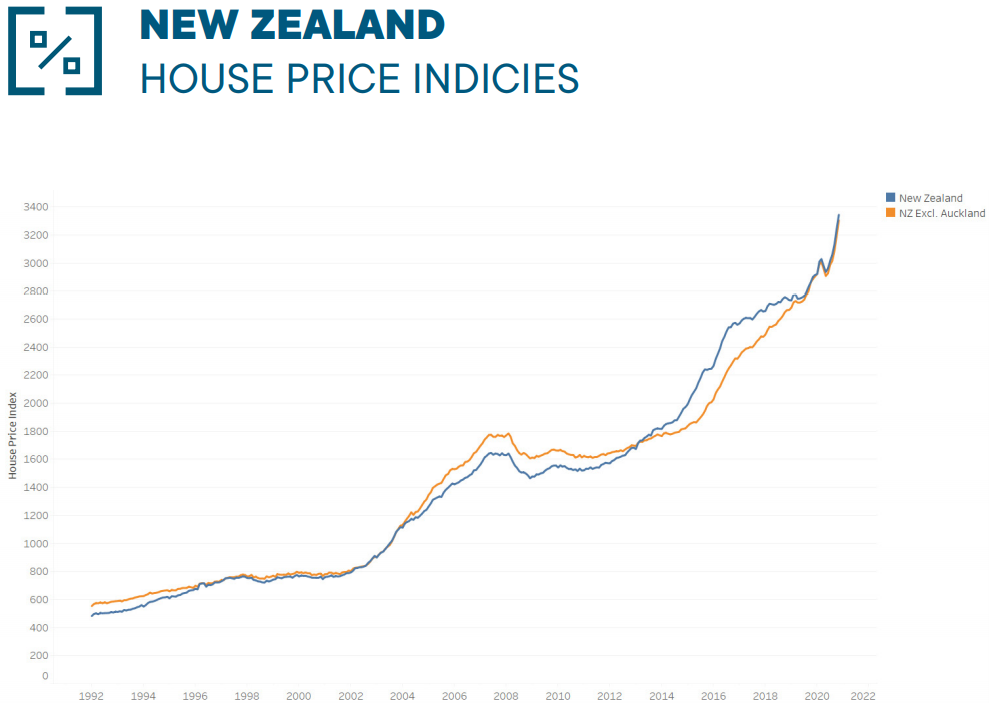On Friday, the Real Estate Institute of New Zealand (REINZ) delivered the sobering news that New Zealand house prices have surged to another all-time high following 18.4% growth year-on-year:
It was also reported last week that New Zealand’s home ownership rate has fallen to its lowest level in around 70 years.
The unfolding disaster has prompted calls for ‘tiny homes’ to be used as a solution to New Zealand’s housing affordability crisis:
[The] tiny home on wheels – or THOW, as they are known in online communities – cost her a total of $25,000, which includes all the tools she needed, and a good-quality $12,500 trailer for it to sit on…
The completed home is 6.2m by 2.4m and is fully self-contained with a composting toilet. It has two mezzanine floors.
Pomeroy says the current legislative environment around housing is wrong.
“They should be pushing for small houses. Instead of building in new subdivisions and having covenants specifying that a house should be a minimum size”…
“Why don’t we set aside land for people with tiny houses, with a big shared outdoor area?
“It’s a really obvious answer to the housing crisis.”
Both Australia and New Zealand for generations have had land “set aside… for people with tiny houses”, only this was previously called the less sexy name of “caravan parks” or “trailer parks”.
Travel throughout either country and you will find such parks providing long-term leases to the poorest and most marginalised in society. You won’t find any actual home ownership, since there is no land and no title.
If tiny homes represented a genuine housing solution, we would have witnessed a stampede of people seeking to live in caravan parks.
The fact that such parks are reserved for poor people speaks volumes as to the true merits of tiny home living.
The long-term solution to New Zealand’s (and Australia’s) housing affordability crisis does not involve stuffing the population into caravans “tiny homes”. No, it requires addressing the underlying drivers causing the problem in the first place, including:
- Reforming property tax rorts;
- Banning foreign buying of local real estate;
- Freeing-up fringe land supply;
- Increasing investment into public housing;
- Making tenancy rules more secure; and
- Stabilising population growth (via lower immigration).
Policy makers must address these underlying distortions instead of cramming the citizenry into retrograde battery-style living.


